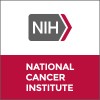Decitabine, Doxorubicin, and Cyclophosphamide in Treating Children With Relapsed or Refractory Solid Tumors or Neuroblastoma
Recurrent Neuroblastoma, Unspecified Childhood Solid Tumor, Protocol Specific

About this trial
This is an interventional treatment trial for Recurrent Neuroblastoma
Eligibility Criteria
Inclusion Criteria: Histologically confirmed diagnosis of either of the following: Solid tumor (part A) No lymphoma Neuroblastoma (part B) Original diagnosis may be based on elevated urine vanillylmandelic acid (VMA) and homovanillic acid (HVA) and bone marrow examination Accessible disease by bone marrow aspirate or tumor biopsy No laparotomy, thoracotomy, endoscopy, or craniotomy for biopsy No known curative therapy OR therapy proven to prolong survival with an acceptable quality of life available No known brain or spinal cord metastases No CNS tumors Performance status - Karnofsky 50-100% (patients 11 to 21 years of age) Performance status - Lansky 50-100% (patients ≤ 10 years of age) Parts A and B without bone marrow infiltration: Absolute neutrophil count ≥ 1,000/mm^3 Platelet count ≥ 100,000/mm^3 (transfusion independent) Part B with bone marrow infiltration (i.e., tumor metastatic to bone marrow with granulocytopenia, anemia, and/or thrombocytopenia): Absolute neutrophil count ≥ 750/mm^3 Platelet count ≥ 50,000/mm^3 (transfusion independent) Hemoglobin ≥ 8.0 g/dL (transfusion allowed) No sickle cell anemia Bilirubin ≤ 1.5 mg/dL ALT ≤ 5 times upper limit of normal No significant hepatic dysfunction that would compromise the tolerability of decitabine or interfere with study procedures or results Creatinine based on age as follows: ≤ 0.8 mg/dL (5 years of age and under) ≤ 1.0 mg/dL (6 to 10 years of age) ≤ 1.2 mg/dL (11 to 15 years of age) ≤ 1.5 mg/dL (16 to 21 years of age) Creatinine clearance or radioisotope glomerular filtration rate ≥ 70 mL/min No significant renal dysfunction that would compromise the tolerability of decitabine or interfere with study procedures or results Shortening fraction ≥ 28% by echocardiogram Ejection fraction of ≥ 45% by MUGA No significant pulmonary dysfunction that would compromise the tolerability of decitabine or interfere with study procedures or results Not pregnant or nursing Negative pregnancy test Fertile patients must use effective contraception No prior allergic reaction attributed to compounds of similar chemical or biological composition to agents used in this study No uncontrolled serious infection No significant end-organ dysfunction that would compromise the tolerability of decitabine or interfere with study procedures or results Recovered from prior immunotherapy At least 7 days since prior biologic therapy More than 1 week since prior growth factor therapy (2 weeks for pegfilgrastim) More than 2 weeks since prior epoetin alfa At least 6 months since prior autologous stem cell transplantation At least 6 months since prior allogeneic bone marrow transplantation Patients must have full organ recovery and no evidence of graft-versus-host disease No concurrent immunomodulating agents No concurrent immunotherapy No concurrent biologic therapy No concurrent epoetin alfa Recovered from prior chemotherapy More than 2 weeks since prior myelosuppressive chemotherapy (6 weeks for nitrosoureas) Prior total lifetime cumulative anthracycline dose ≤ 450 mg/m^2 of doxorubicin or equivalent No other concurrent chemotherapy No concurrent hydroxyurea Recovered from prior radiotherapy More than 2 weeks since prior local palliative small port radiotherapy More than 6 months since prior substantial bone marrow irradiation (e.g., cranio-spinal irradiation, total body irradiation, or hemi-pelvic irradiation) No concurrent radiotherapy No other concurrent anticancer therapy No other concurrent investigational agents Concurrent oral iron supplementation for patients with a known iron deficiency or a microcytic hypochromic anemia allowed
Sites / Locations
- Children's Oncology Group
Arms of the Study
Arm 1
Experimental
Arm I
PART A (solid tumor patients): Patients receive decitabine IV over 1 hour on days 0-6 and doxorubicin IV over 15 minutes and cyclophosphamide IV over 1 hour on day 7. Patients then receive filgrastim (G-CSF) subcutaneously (SC) beginning on day 8 and continuing until blood counts recover OR pegfilgrastim SC once on day 8 or 9*. Treatment repeats every 28 days for up to 12 courses in the absence of disease progression or unacceptable toxicity. PART B (neuroblastoma patients): Once the MTD is determined for part A, patients are treated as in part A at the MTD.
Outcomes
Primary Outcome Measures
Secondary Outcome Measures
Full Information
1. Study Identification
2. Study Status
3. Sponsor/Collaborators
4. Oversight
5. Study Description
6. Conditions and Keywords
7. Study Design
8. Arms, Groups, and Interventions
10. Eligibility
12. IPD Sharing Statement
Learn more about this trial
